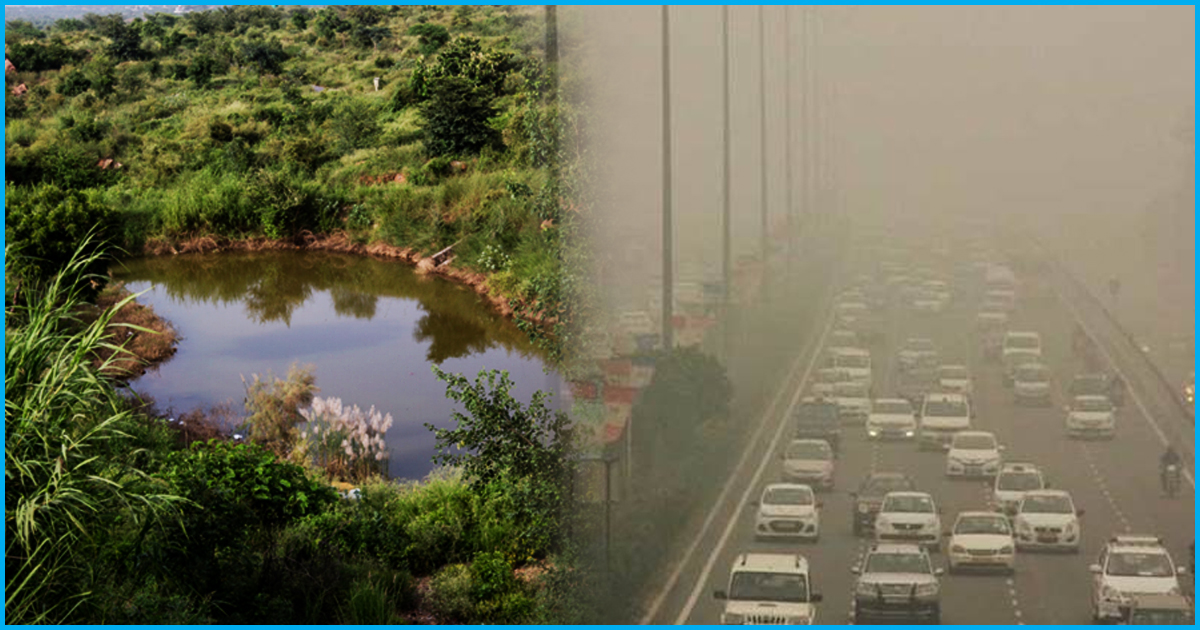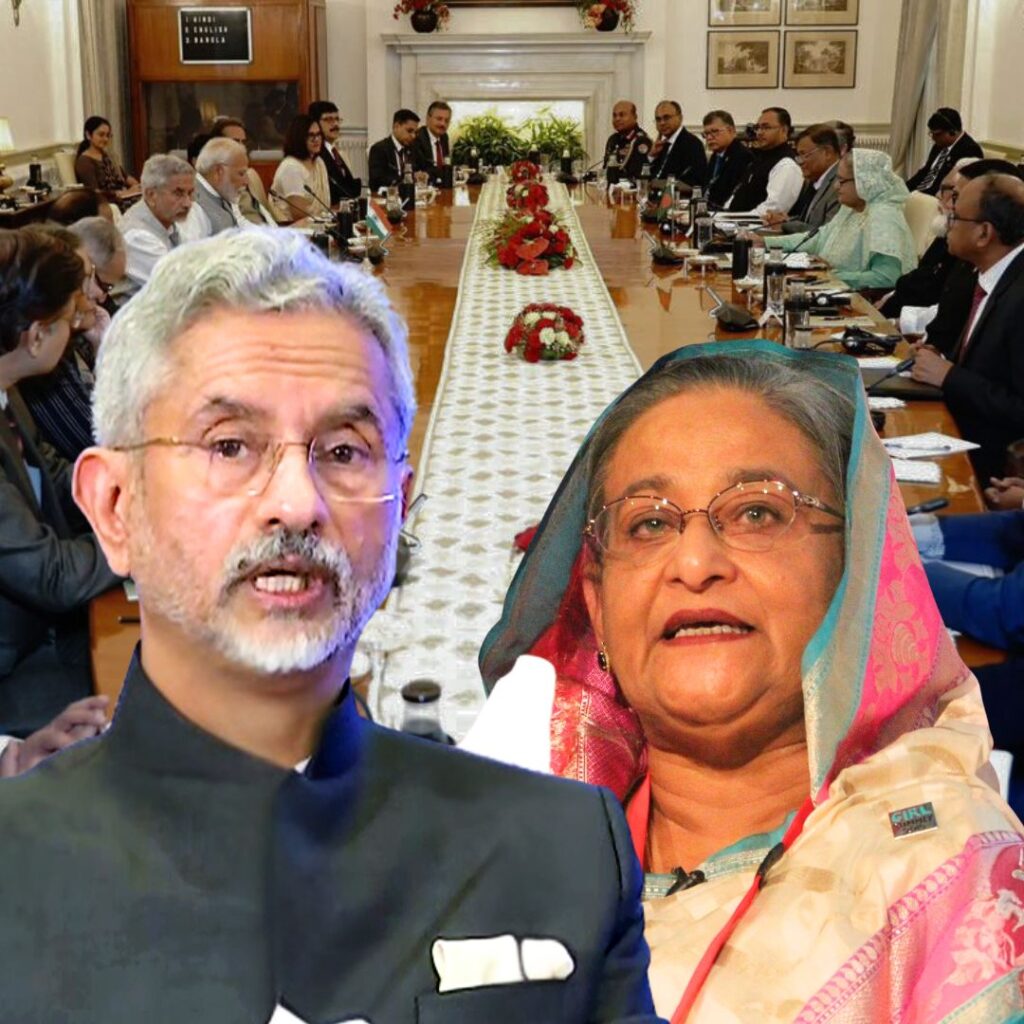Tagging along one of the fastest growing cities in India, lay a fallow land spanning 380 acres. It is not too hard to imagine that the land was once all luscious with vibrant flora and fauna, but later stripped off all her resources, thanks to unhindered stone quarrying and illegal mining. As the city prospered with competing highrises and dwindling green cover, a handful of the citizens smelled caution. Gathering campaigners of all ages and registering the help of a few corporates, they afforested the 380-acre stretch; giving birth to an entire biodiversity park from scratch in eight years. Sounds like a modern day fairy tale, doesn’t it? This is the story of Gurgaon (Gurugram) in Haryana and her verdant pride – Aravali Biodiversity Park – borne completely out of the sheer zeal and untiring labour of the citizens’ group ‘Iamgurgaon’. However, this is not a story with a happy ending.

New road will destroy the park
A few months ago, the National Highways Authority of India (NHAI), in coordination with Gurugram Metropolitan Development Authority (GMDA) approved the construction of a six-lane highway encompassing the periphery of the park, in order to reduce the traffic burden on the Gurugram-Delhi route.

Needless to say, the project, named Greater Southern Peripheral Expressway Road (GSPR), will completely destroy the Aravali Biodiversity Park. Aside from erasing the tireless efforts of thousands overnight, trees will be felled and the lush green cover awaits to be concretised beyond recognition.
Cleanest air in Delhi-NCR
With air pollution in Gurugram peaking past alarming levels, Aravali Biodiversity Park is the city’s only solace. In fact, several reports have stated that the park and its adjoining area has the cleanest air quality index in the whole of the Delhi-NCR region. Though the NHAI insists that only a part of the park will be adversely affected, Iamgurgaon activists continue to assert that due to the uneven topography, attacking even a little part of the land will spell ecological disbalance for the entire landscape. Citizens have taken to the streets to prevent the implementation of this destructive decision by the NHAI, however, all appeals seem to be falling to deaf ears.

How a community came together to raise a forest
It is no cakewalk to restore a forest in a rugged terrain scarred by unsustainable mining. Yet, Iamgurgaon achieved the impossible. Started in 2010, the project was initiated on a small scale by planting a variety of saplings. Soon, over 15,000 school students were roped in along with 20,000 citizens who planted over 1 lakh trees in the area.

Over seventy corporates contributed generously to make the area not just an urban garden, but an extensive ecological habitat for diverse species of plants and animals. In the end, the aim was to offer the Gurugram residents a place to breathe, relax and cherish in. With help from The Municipal Corporation of Gurugram, the project was deemed to be a success.
An island of hope amidst the concrete jungle
Exotic species of plants were brought in from all over the country.and nurtured in separate nurseries till plantation. Presently, the park houses over 400 plant species, among which nearly 200 are endangered flora of northern Aravalis.

Common wild animals like civet cat, jungle cat, nilgai, jackal, mongoose, snakes, lizards, skunks and hare pry all around the park while 182 species of rare birds have been sighted so far.

The skyrocketing population of Gurugram exerts a heavy pressure on the groundwater levels, to the extent that the city pumps out 300% more groundwater than the recharge capacity. The city has her own share of water crisis and related problems. The soil and water conservation measures adopted in Aravali Biodiversity Park help to recharge this prized groundwater.

Additionally, the park provides a perfect getaway for the tired city dwellers offering nature trails, jogging, walking and cycling tracks and even a central amphitheatre for cultural activities.
Save The Aravali Biodiversity Park
The parent group behind this extraordinary endeavour, Iamgurgaon stands severely upset over the NHAI decision. Inspired by environmental movements of the past, citizens are volunteering to support the “Save The Aravali Biodiversity Park” campaign. Ecologists, environmentalists, non-profit groups, children and citizens are vehemently protesting the proposal. In October, an official protest meeting was attended by over 1200 people who raised slogans to announce the park as a ‘sacred forest’.

On Children’s Day, around 5000 students from thirty-one schools in Gurugram joined hands in protest, and many even wrote letters to the Haryana CM with their earnest appeals, reported The Times Of India. Class 7 student Ira Mishra said, “In Gurugram, this park gives us hope that people will breathe fresh air. Does a road have more importance than our health?” Adil Hussain, a class 4 student, wrote to the CM, “Please don’t cut the trees. If you cut them, we cannot breathe and birds will die.” A marathon was organised across Gurugram and Delhi-NCR on Sunday with the message to protect the Aravalis.

The month-long protests seemed to have borne some fruit as Haryana Forest and PWD minister Rao Narbir Singh took notice of the matter and appealed more than once to NHAI to withdraw the construction of the highway through the park. However, NHAI continues to maintain its stance on the need of the proposed road and denies receiving any appeal from the State Government, reported The Times Of India.
The Logical Indian Take
In June 2017, the Haryana government permitted felling of over 6000 trees spread across 52 acres of forested land in Gurgaon, for a housing project by a real estate firm. Only recently has the NGT directed the Ministry of Environment to review the incident and submit a report, much after the damage has been done.
However, the scenario in the case of Aravali Biodiversity Park is far more serious. The issue has not been highlighted far and wide and thus it has evaded mainstream attention so far. But, it is high time that we, Indians, take note and raise a mass appeal to thwart the impending environmental destruction in our neighbourhoods, cities and the country.
Also Read: “31 Hills Have Disappeared”: SC Raps Rajasthan Govt Over Illegal Mining In Aravalli Range











